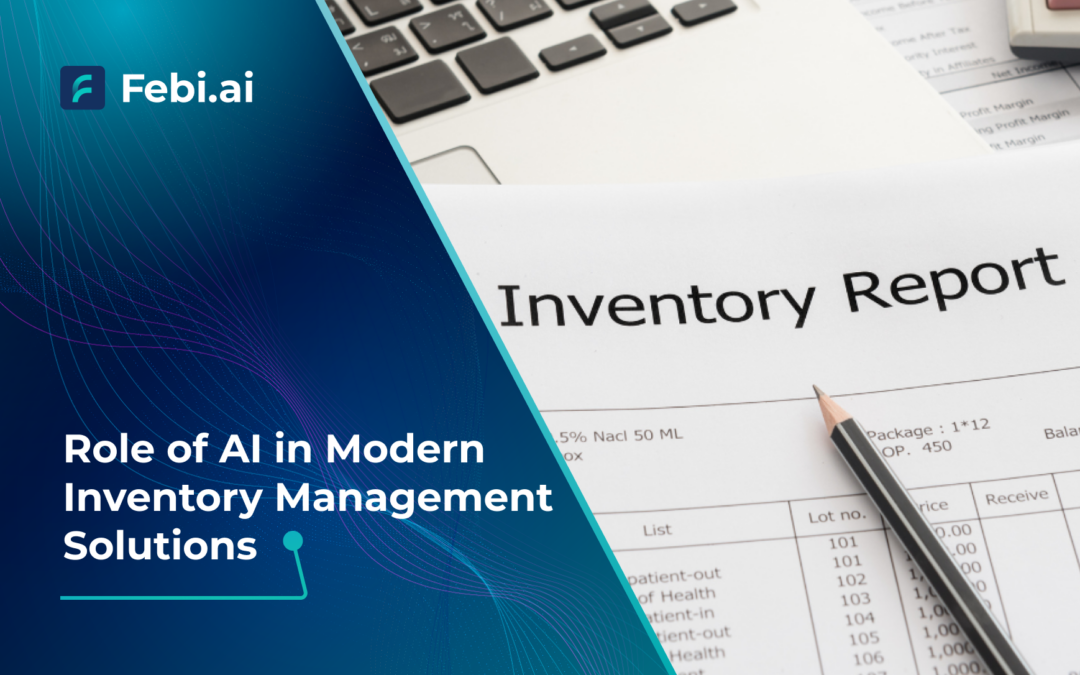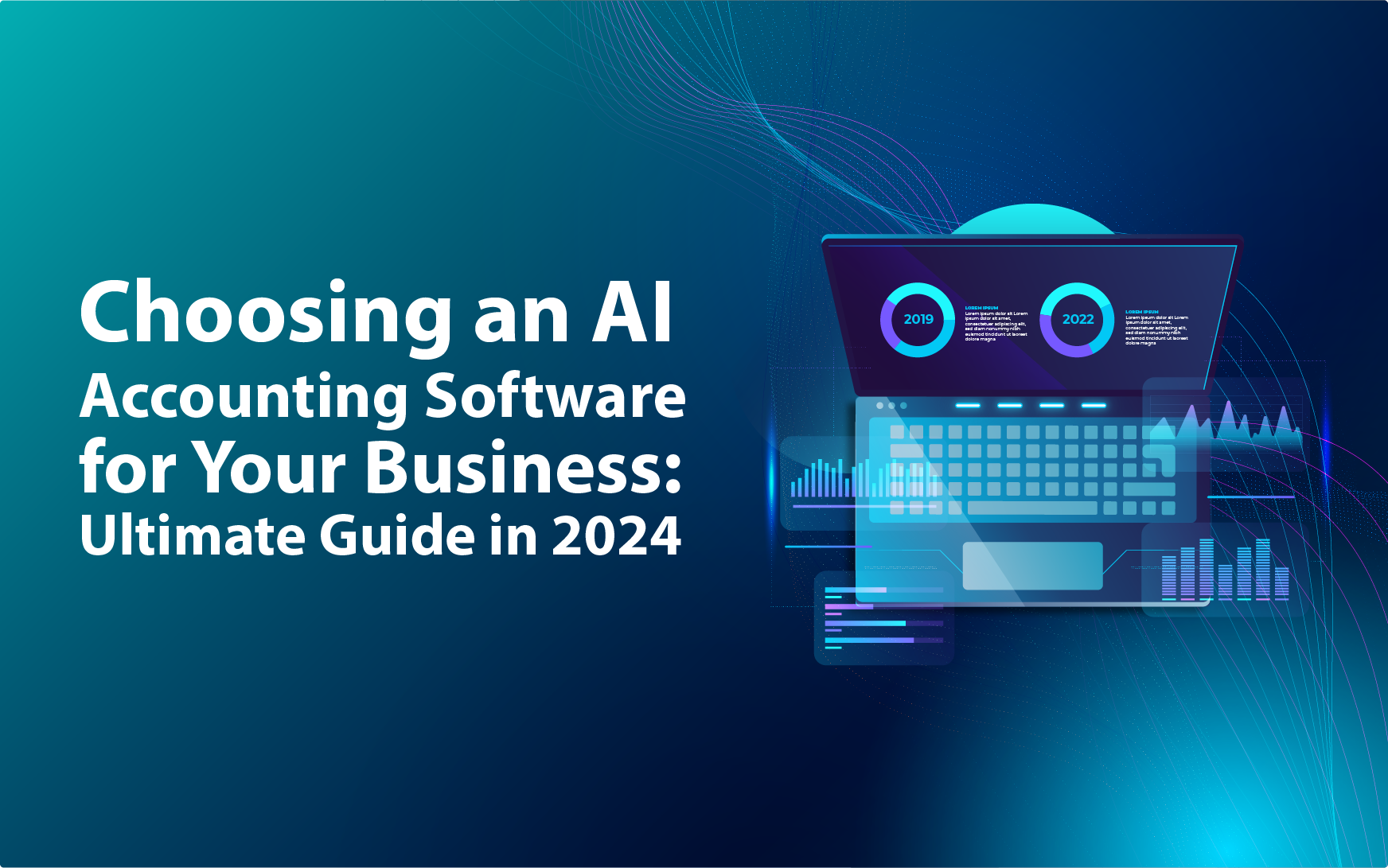Table of Contents
For most businesses, managing inventory efficiently is a significant contributor towards success. Traditional methods of inventory management often involve manual processes that are prone to human error, leading to inefficiencies such as overstocking, understocking, or slow response to demand changes. With the rise of Artificial Intelligence (AI), businesses are now embracing smarter, automated inventory management solutions that streamline operations, cut costs, and improve decision-making.
This blog explores the transformative role of AI in modern inventory management and the significant benefits it offers to businesses.
Market Trends on Inventory Management Systems
- The global inventory management software market size was estimated at USD 3.43 billion in 2023 and is expected to grow at a CAGR of 6.7% from 2024 to 2030. (Grand View Research)
- According to the Fortune Business Insights, the global inventory management solution industry was valued at USD 2.13 Bn. in 2023. In 2024, it is estimated to be at USD 2.31 Bn. and reach USD 4.84 Bn. in 2032, marking a 9.7% CAGR.
- The inventory management software market is on the rise, and it’s easy to see why. One major reason for this growth is how effortlessly these systems connect with other business tools, like accounting software and Point-of-Sale (POS) systems.

Zero to minimal intervention is required for maintenance of the stock as effective inventory control systems are programmed into the software applications. This, in turn, increases speed and precision to the way businesses operate. More businesses will begin reaping the rewards and hence the requirement for these will ever remain high.
1. Automated Demand Forecasting
Did you know that solving issues of understocking and overstocking decrease the inventory costs by 10%, according to a report published by Myos? One of the most impactful ways to use AI in enhancing inventory management is through automated demand forecasting.
AI algorithms can analyze vast amounts of data, including historical sales, market trends, and even external factors like weather or seasonal changes, to predict future demand. This results in more accurate forecasts compared to traditional methods, allowing businesses to optimize inventory levels, reduce overstocking, and avoid stockouts.

For example, some AI-powered systems can help you even predict spikes in product demand during certain times of the year, helping companies adjust their inventory accordingly. This leads to increased sales, improved customer satisfaction and minimized holding costs.
2. Real-Time Inventory Tracking and Visibility
AI enables real-time tracking and monitoring of inventory across different locations, offering businesses a unified view of their stock levels. With automated inventory management systems, businesses can monitor product movement in warehouses, stores, or supply chains in real time. This visibility helps identify trends, optimize stock allocation, and minimize discrepancies.
Moreover, AI can detect inventory discrepancies and even fraudulent activities, if happening in a business immediately. This puts stakeholders and inventory managers in a position for quick action before they become significant issues and cause business loss of revenue and reputation. Results? Businesses can efficiently manage their supply chains, leading to better resource allocation and reduced operational costs.
3. Optimized Stock Replenishment
In most cases, traditional replenishment of inventory is treated as a follow-up or a reactive activity. This perspective is turned on its head by AI, which assesses the trends first and then informs when the next replenishment will be required. Thanks to AI based systems of inventory control, depending on the forecast of demand and data collected before, it is possible to automatically put an order when the availability of stock hits a particular limit. Therefore, this results in a more efficient inventory system, minimizes the chances of having excess stock and most importantly, companies are able to keep up with the supply of essential items without running out of stock.
By minimizing manual intervention, AI also reduces the chance of human errors and increases operational efficiency. In addition to optimizing stock replenishment, you should be aware of the most effective strategies for managing inventory in small business.
4. Personalized Customer Experiences
AI powered inventory management systems help enhance the customer experience by not only suggesting appropriate items but also ensuring that the stock is readily available as per the customer’s specific desires. For example, retailers can study consumers’ purchasing behavior, history of browsing and even their wishes in the course of time so as to forecast the market trend.

This customer-oriented approach helps the organizations to balance their stock with that of the customers thus improving the levels of satisfaction. Besides, AI can deal with product returns in a more efficient way ensuring that all the recovered goods that have been returned are quickly fitted back into storage or they are used accordingly as per demand.
5. Improved Supply Chain Efficiency
You’d be surprised to learn that 79% of companies with high-performing supply chains are able to surpass their average performance within respective sectors and industries. When it comes to supply chain management, the application of AI is not limited to just stock control. Supply chain management integrates all the processes including suppliers, logistics and customers and uses data analytics to maximize the efficiency of the supply chain.
For instance, it can anticipate possible problems, suggest different providers, or optimize the process of shipping so that everything arrives where it should, when it should, and without excessive charges. This paradigm shift enhances the robustness of the supply chain and alleviates delays, thereby allowing businesses to continue to restock their consumables regardless of any changes in the market.
6. Enhanced Warehouse Operations

AI-powered robots and drones are increasingly being used to streamline warehouse operations, such as picking, packing, and sorting items. These autonomous systems improve accuracy and reduce the time required to move items through the warehouse, leading to faster order fulfillment. AI also makes it possible to maximize the space in the warehouse by understanding the trends in product movement and offering appropriate positioning of various items within a warehouse. This improves the pace of working of the warehouse operations as well as cuts the workforce costs.
7. Long-term Sustainability and Waste Reduction
In modern businesses, sustainability is a growing concern. Automated, cloud based inventory management systems help in management by minimizing waste through precise demand forecasting and optimal stock levels. With better insight into customer demand, businesses can reduce the amount of excess inventory that might otherwise be discarded or sold at a loss.
Additionally, AI-powered systems can help businesses implement just-in-time (JIT) inventory practices, further reducing the need for large stockpiles and lowering environmental impact.
Summing Up
The role of AI in cloud inventory management is transformative. From predictive demand forecasting to real-time tracking and warehouse automation, AI is helping businesses optimize their inventory processes, reduce costs, and provide better customer experiences. As AI technology continues to advance, the benefits it offers to inventory management will only increase, positioning AI as a critical component in the future of efficient business operations.
By adopting AI-powered inventory management solutions, businesses gain a significant competitive edge through improved decision-making, enhanced efficiency, and a commitment to sustainability. Are you ready to take your inventory management to the next level?










